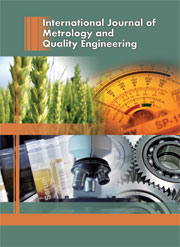No CrossRef data available.
Article contents
Combined D-optimal design and generalized regression neural network for modeling of plasma etching rate
Published online by Cambridge University Press: 22 September 2014
Abstract
Plasma etching process plays a critical role in semiconductor manufacturing. Because physical and chemical mechanisms involved in plasma etching are extremely complicated, models supporting process control are difficult to construct. This paper uses a 35-run D-optimal design to efficiently collect data under well planned conditions for important controllable variables such as power, pressure, electrode gap and gas flows of Cl2 and He and the response, etching rate, for building an empirical underlying model. Since the relationship between the control and response variables could be highly nonlinear, a generalized regression neural network is used to select important model variables and their combination effects and to fit the model. Compared with the response surface methodology, the proposed method has better prediction performance in training and testing samples. A success application of the model to control the plasma etching process demonstrates the effectiveness of the methods.
Keywords
- Type
- Research Article
- Information
- Copyright
- © EDP Sciences 2014




